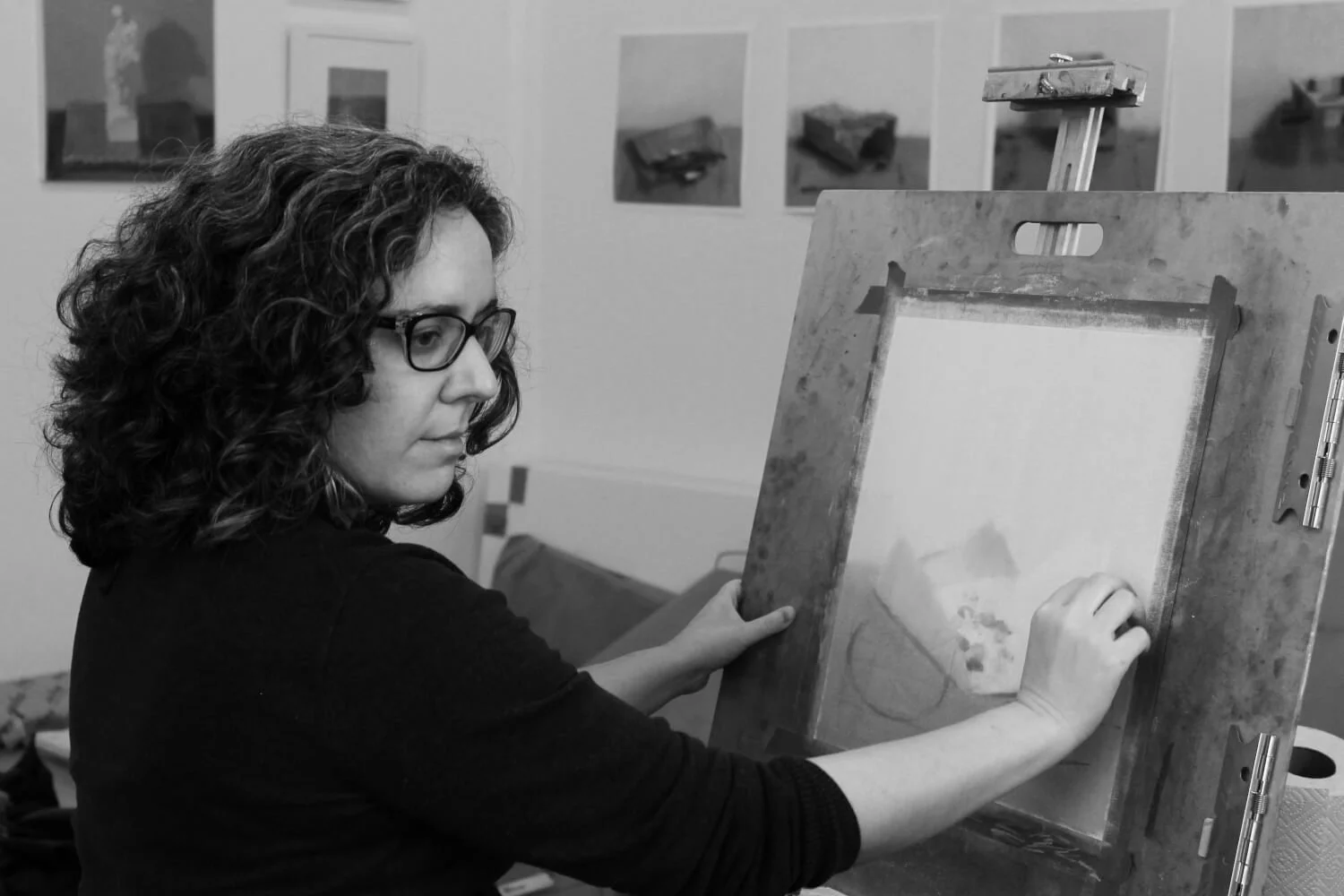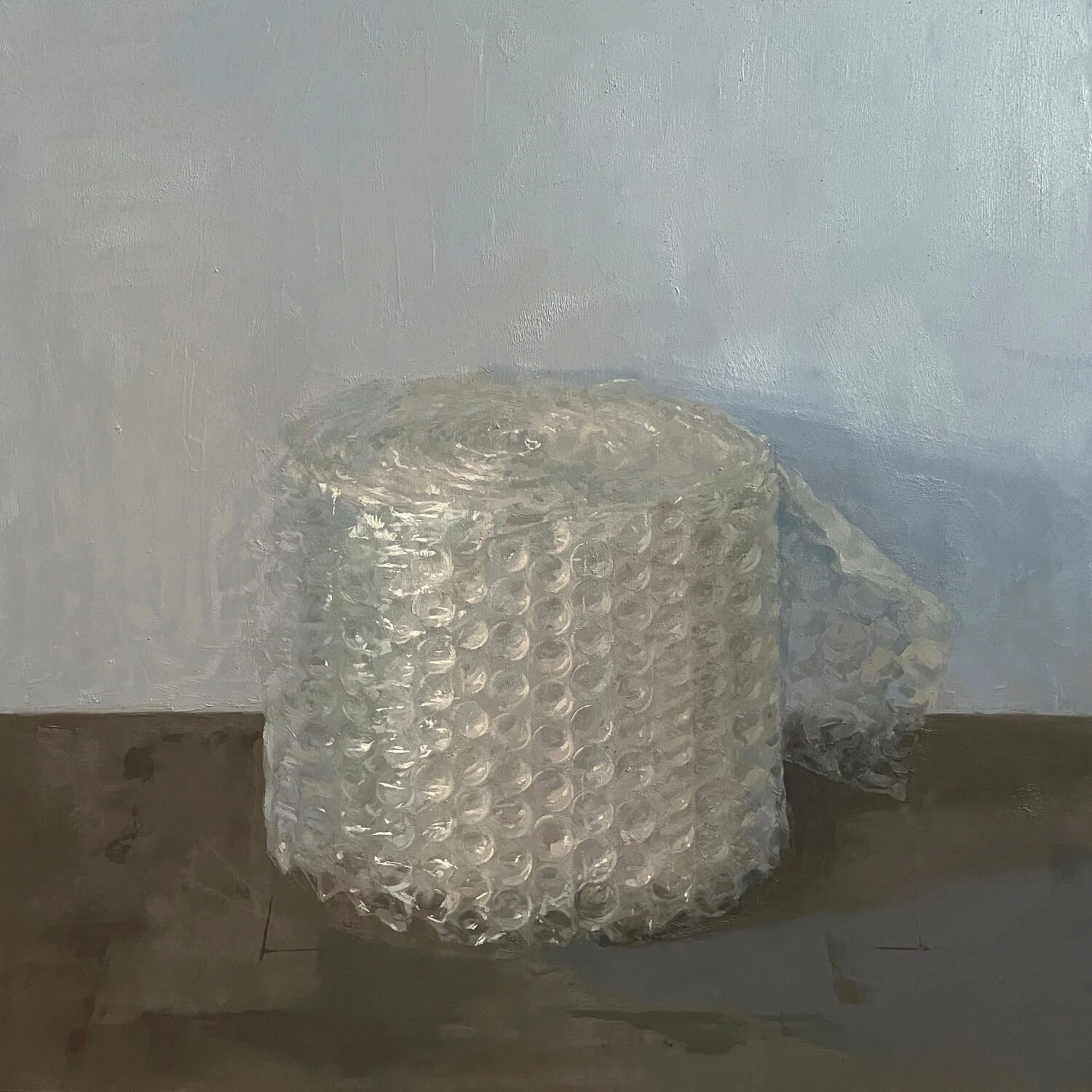Samantha Haring
Samantha Haring is an artist and educator from Des Plaines, Illinois. Haring earned her MFA from Northern Illinois University and her BFA from the School of the Art Institute of Chicago. She spent a summer in Italy at the International School of Drawing, Painting, and Sculpture, where she fully developed her commitment to light, color, and observational painting. Haring was one of the 2015-16 Artists-in-Residence at Manifest Gallery. She teaches drawing and design courses in the School of Design at the University of Cincinnati and has been a Resident Instructor at Manifest Drawing Center since 2016. Haring’s work is published in issues #119 and #123 of New American Paintings, as well as in several recent Manifest INDA and INPA publications. She is represented by Gallery 19 in Chicago. Her studio practice is currently based in Cincinnati, where she spends an inordinate amount of time staring at the color of dust.
Artist Statement
I make quiet paintings in a noisy world. My work is an intimate meditation on humble objects and the detritus of studio life. I aim to promote a reengagement with the mundane while creating a moment of reflection for the viewer.
The artist’s studio is full of memory; its history is evident in the residue layered on the walls and floor, as well as in the dusty objects scattered around the room. These remnants serve as a metaphor for the imprints people leave behind on each other and on the world. By painting forgotten corners, blank expanses, and abandoned objects, I explore the duality of absence and presence while questioning the intangibility of loss.
My current work is a series of single-object portraits of packing materials and other containers. I’m interested in contemplating the things we use to fill empty space. Bubble wrap, air pockets, and other kinds of recycled paper are temporary objects by design: they are intrinsically important while something is in transit, but immediately disposable once the destination is reached. These objects offer a literal form of cushioning, protection, or armor; yet when seen in isolation, they become as much about the space around them and the things unseen as they are about themselves. I am forever striving to make the invisible visible. Emptiness is an illusion. Even in silence, there is a tremendous amount of noise.
www.samharing.com
What initially drew you to art?
I’ve always been a painter. One of my earliest memories is sitting at the kitchen table with a little pan watercolor set, being mesmerized by the colors. Nothing has ever felt more right than having a paintbrush in my hand. My parents are graphic designers, and I’m very lucky that they have always been so supportive and encouraging. We spent a lot of time in art museums and galleries when I was growing up, and for as long as I can remember, I have dreamed of making something worthy of those walls. Art is also the language I feel most comfortable speaking. Words fall short so much of the time; it’s significantly easier for me to speak in images.
What elements of your life have ended up becoming a part of your art?
The thing I love about still lifes is the way that objects can become metaphors. All of my work starts from a deeply personal place; I hope that the images I choose and the manner in which I paint them evoke either a story or an emotion that can transcend the personal to become more universally familiar. I have always sought the quiet and found comfort in solitude; I like to say that I make quiet paintings in a noisy world. My current work is a series of single-object portraits of packing materials and other containers. I’ve been thinking recently about the things we use to fill empty space – both the literal and the metaphorical – and I’m interested in telling stories about the duality of absence and presence. Loss, memory, and queer joy are some of the current threads that run through my practice.
What about your practice do you find the most fulfilling and/or energizing?
The middle of a painting is my favorite part. Beginnings and endings are always hard for me, but once a piece is in progress, I can see what the next step should be, and the one after that… I try to always do the next right thing. There’s so much joy for me in responding to what’s already on the surface and in seeing a painting change over the course of multiple sessions. Experiencing artwork in person is also especially energizing. There’s nothing like spending a few hours in a museum with my sketchbook. There’s a great community of painters where I live, and it’s always inspiring to see their shows and to spend time in their studios talking shop. Even texting with my artist friends in other states about works in progress or swapping stories about our current favorite greens can be so restorative.
Tell us about your experience getting to where you are now. What has been the most important thing you’ve learned?
Some of the best advice I got early on was to be a sponge – to take everything in, to do the things that scare me, to try anything once. I earned my BFA from SAIC and my MFA from NIU; I also spent a summer studying in Italy at the International School of Drawing, Painting, and Sculpture, which helped train my eyes to see color and light more clearly. I have had great mentors throughout my education; I owe them quite a lot, especially Marion Kryczka, Betsy Rupprecht, Dan Gustin, and Frank Trankina. I’ve been teaching college-level drawing and painting classes since 2012, and in 2015 I spent a year as an artist-in-residence at Manifest Gallery. There’s a lot of truth in the “10,000-hour rule” – it takes a significant amount of time and practice to start to get good at anything, and perhaps the most important thing is simply showing up every day. Nothing beats regular, consistent practice. The work only ever comes out of the work. And sometimes a piece that seems like an outlier is actually the start of the next series. Don’t censor yourself; make the paintings that you want to make, and trust that the “why” will reveal itself over time.
How has ‘community’ impacted your artistic practice?
Painters tend to be solitary creatures by design – we have to spend so much time alone in the studio in order to make the work. So, finding a supportive community has been life-changing. It’s invaluable to have people you trust to celebrate and commiserate with, to share open and honest feedback about new work, and to just get out of your own head every once in a while. I share studio space with some truly excellent artists in Cincinnati (if you don’t already know their work, go follow Katherine Colborn, Katie Baker, Adrienne Dixon, Ellina Chetverikova, and Hannah Parrett). It’s an honor to be in community with them. I’m also grateful on a daily basis for my family and friends who understand the importance of uninterrupted studio time, and who always say yes when I ask them to look at a painting for me. It takes time to find your people, but once you do, it’s a lifelong thing. I’m a better painter because of my community.





